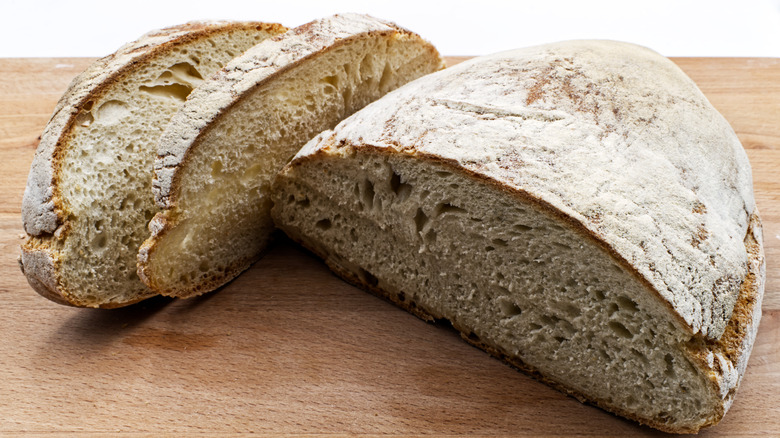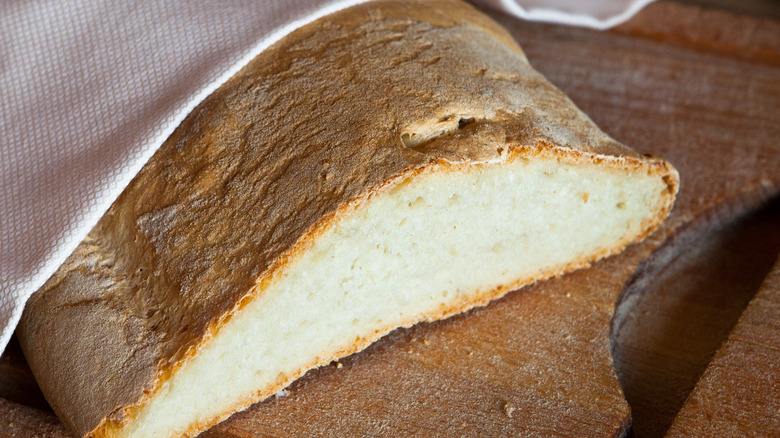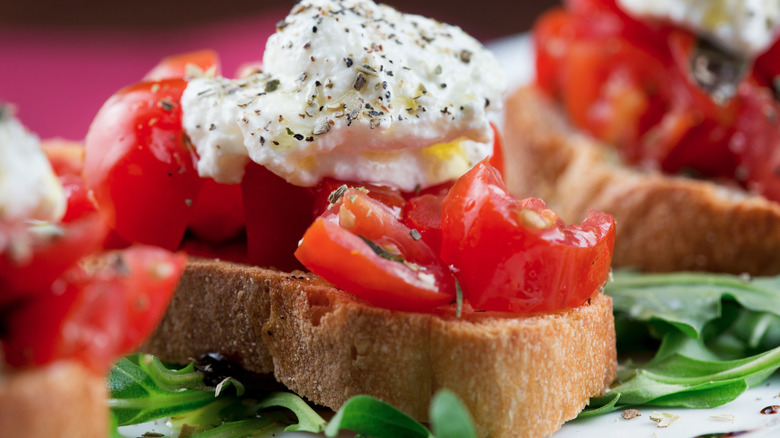What Makes Tuscan Bread Stand Out From All The Rest?
It is no secret that bread has been (and continues to be) a staple in cuisines throughout the world and human history. It is so much of a staple, in fact, that it plays a significant role in various religious holidays, from challah on Shabbat to hot cross buns on Easter. Breads are an easy nutritional source and the perfect vessel for sauces, meats, spreads, and more. Over the hills in Tuscany, Italy, one particularly beloved bread has its roots as far back as Roman times. Ever since, the world has not been able to get enough.
Tuscan bread is a thoughtfully crafted round bread that brings a rustic feel to any table it adorns. Though it may seem like a basic artisan bread, it has certain qualities that make it stand out from all the rest. Namely, it is baked without any salt, and it has a particularly spongey texture on the inside and hard, crusty shell on the outside.
The technicalities of Tuscan bread
There are some tell-tale characteristics that set Tuscan bread apart from the rest. Its characteristics are rooted in tradition, having earned a Protected Designation of Origin label in 2016, guaranteeing that it is produced in Tuscany according to its historic conventions.
Namely, the loaf is unsalted. Though a lack of salt may seem like a minute detail, salt is usually one of four main ingredients in bread (the others are flour, water, and yeast). There are a few possible explanations that align with Tuscany's culinary history. One theory is that other traditional Tuscan foods, like ribollita, are characteristically salty, so the blandness of the bread is designed to balance them out. Alternatively, some believe that because salt was once a heavily taxed ingredient, the common people of Tuscany could not afford it and, therefore, omitted it from their bread recipes, thus starting a tradition that carries on today.
How to play up the properties of Tuscan bread
Because of its signature blandness, Tuscan bread is meant to pair with other foods with stronger flavors. It is also characteristically porous on the inside and crusty on the outside, which makes it a perfect pairing bread. Its hard crust helps it serve as a sturdy base for bruschetta or burrata, among other tasty toast toppers. Its spongy interior is ideal for soaking up sauces, broths, and all sorts of delectable flavorings that soften it up.
Though the bread often serves as a sidekick, it plays the starring role in panzanella, which is a Tuscan bread salad. In the tradition of not letting bread go to waste, even if it is stale, panzanella is made from fresh vegetables and chopped-up Tuscan bread chunks that are all soaked in water, olive oil, and vinegar. Panzanella is a delightful dish that ingeniously repurposes old bread.
The bottom line is, Tuscan bread might seem dull, but it is dull by design. There are plenty of breads to choose from, but if you consume Tuscan bread properly, it makes for an ideal bread choice for plenty of dishes.


